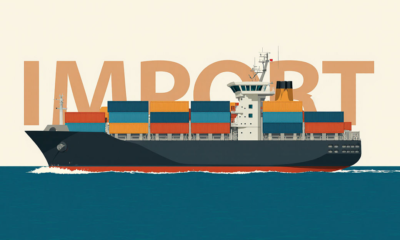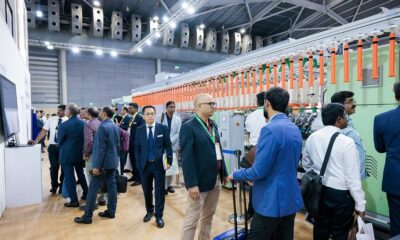Fashion
Trump tariffs cut into China sales of US firms: AmCham Shanghai survey
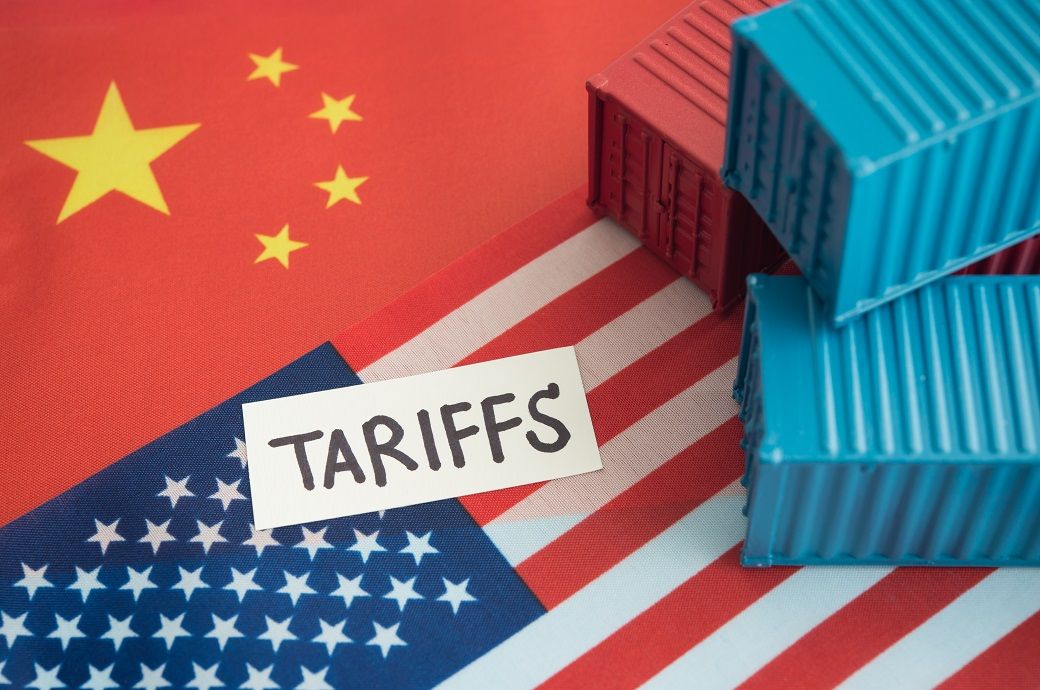
However, China’s efforts to demonstrate its continued openness to global business have yielded significant improvements in metrics related to the regulatory environment, it noted.
Seventy-one per cent of respondents were profitable in 2024, an improvement from 2023’s record low of 66 per cent. Profitability varied widely by sector; 80 per cent of manufacturers and 69 per cent of retailers were profitable.
Volatility in US-China trade ties has dragged optimism in the business environment, headquarter prioritisation of the China market and future revenue expectations to record lows, a survey by AmCham Shanghai found.
Just 45 per cent of respondents expect revenue to rise in 2025.
Forty-one per cent of them are optimistic about the five-year business outlook, with the rate lowest for manufacturers.
Fifty-seven per cent of respondents saw higher revenue in 2024 than in 2023, up from 50 per cent in the previous survey.
Sixty-four per cent of companies expect new US-China tariffs to drag on their 2025 revenue performance. As a result, just 45 per cent anticipate revenue to increase this year. This would be a record low if realised.
For the fourth consecutive year, the rate of respondents optimistic about the five-year business outlook in China hit another historic low. Now, 41 per cent of respondents express any optimism, with the rate lowest for manufacturers (36 per cent) and highest for retailers (51 per cent).
Twelve per cent of respondents ranked China as their headquarters’ top investment destination, also the lowest in the survey’s history.
Forty-eight per cent of respondents said that the regulatory environment was transparent, a 13-percentage point (pp) jump from last year. When asked about obstacles from regulatory challenges, members reported less hindrance across all options.
Over a third of respondents say that Chinese government policies and regulations toward foreign companies have improved in the past few years, 4 pp higher than 2024. Accordingly, 41 per cent say they are confident in China opening up further, a jump from 22 per cent last year.
Members continued to rank the US-China relationship or geopolitical tensions more broadly as the biggest challenge to their China operations and to China’s economic growth. Trade turbulence is weighing on willingness to invest in China and leading firms to double down on risk mitigation strategies, a release from the chamber said.
Forty-eight per cent of respondents urged the US government to completely remove all tariffs and non-tariff barriers on Chinese goods. Another 33 per cent want the removal of April’s reciprocal tariffs and other additional tariffs like the 20-per cent fentanyl tariff.
Members also oppose retaliatory duties, with 42 per cent calling on the Chinese government to remove all tariffs and non-tariff barriers on US imports and an additional 34 per cent hoping for a return to the most favoured nation rate.
If the US revokes China’s Permanent Normal Trade Relations status, 69 per cent of members anticipate negative effects. Companies in the manufacturing sector would bear the brunt, with 78 per cent expecting adverse effects compared to 59 per cent for retail.
Twenty-three per cent increased investments while a record-high 26 per cent cut investments in China. This year, 22 per cent are expecting to raise their China investments and 25 per cent will reduce that.
More companies are limiting their investment exposure to China in response to the changing geopolitical and economic situation; only 39 per cent will not have any China investment limits, down from 45 per cent last year and 50 per cent in 2023.
Companies are shock-proofing supply chains and bifurcating US and non-US strategies in response to global trade tensions. Of those with supply chains, nearly half are making significant adjustments in response to recent tariffs by shifting the sources of US-bound products or building in redundancy.
In the past year, 47 per cent of companies have redirected planned investments away from China, the highest level since this question was first asked in 2017. Southeast Asia remains the top destination for rerouted investment as well as for operations that are moved out of China.
Fibre2Fashion News Desk (DS)
Fashion
EU to levy €3 customs duty on small e-commerce parcels from July 2026
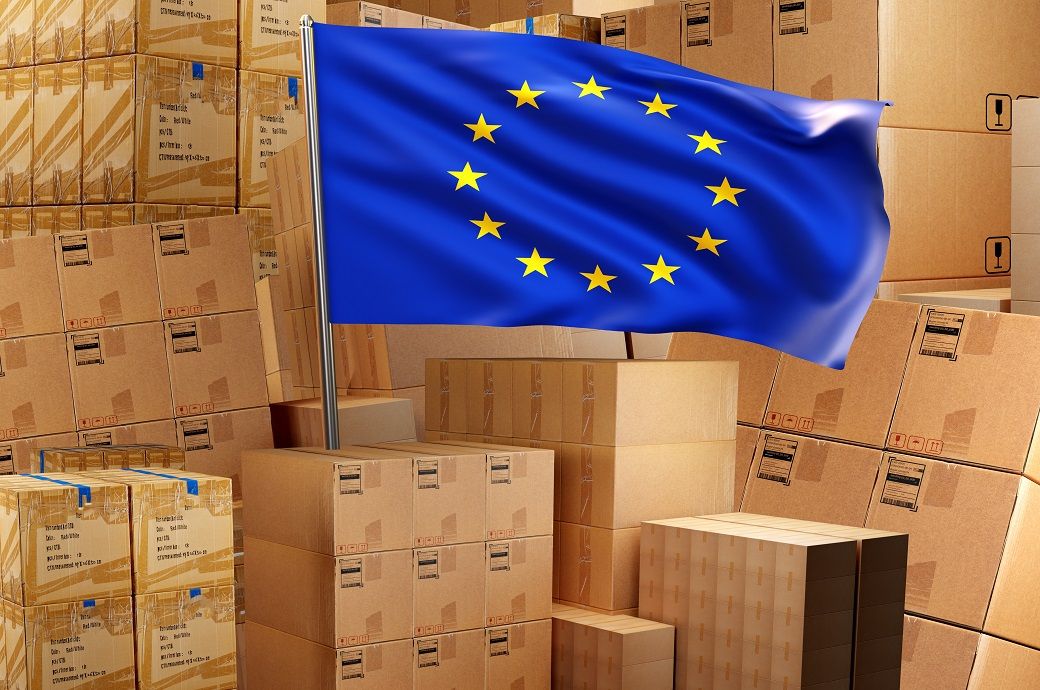
EU officials said the measure aims to address unfair competition faced by EU sellers, alongside concerns over consumer health and safety, widespread fraud, and environmental impact linked to high volumes of low-value imports. Around 93 per cent of e-commerce flows into the EU are expected to fall under the scope of the new duty, the Council said in a press release.
EU Council has agreed to impose a fixed €3 (~$3.52) customs duty on small parcels valued below €150 entering the bloc from July 1, 2026.
The temporary measure targets e-commerce imports, addressing unfair competition, fraud, and safety concerns.
It will apply mainly to goods sold by non-EU sellers registered under the Import One-Stop Shop and remain until a permanent customs reform takes effect.
The €3 rate will apply to goods sold by non-EU traders registered under the EU’s Import One-Stop Shop for VAT purposes. The Council clarified that this customs duty is separate from a proposed handling fee being discussed under the broader customs reform and the EU’s multiannual financial framework.
The temporary duty will remain in force until a permanent system agreed in November 2025 comes into application, which would remove the €150 duty-free threshold altogether and subject all such goods to standard EU tariffs. The European Commission will periodically review whether the duty should also extend to goods sold by traders not registered under the Import One-Stop Shop (IOSS).
Fibre2Fashion News Desk (KD)
Fashion
IKKS: Paris commercial court approves acquisition bid by Santiago Cucci and Michaël Benabou
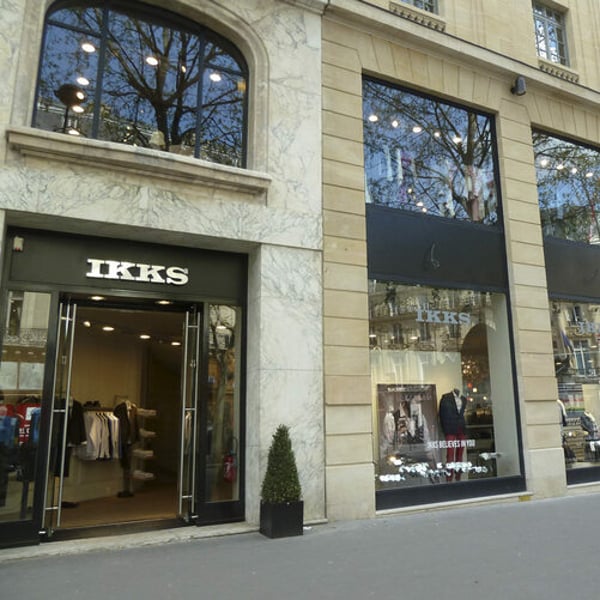
Translated by
Nicola Mira
Published
December 12, 2025
On Thursday December 12, the Paris commercial court decided on the future of French premium ready-to-wear retailer IKKS. At the end of a receivership procedure involving several purchasing bids for IKKS, the court has approved the offer by Santiago Cucci, who was named president of the group’s holding company HoldIKKS last year, and Michaël Benabou, co-founder of event sales site Veepee.
The court’s decision has put an end to months of uncertainty for IKKS’s employees. According to figures drawn up by the receivers at the end of August, the group’s staff numbered 1,287 worldwide, 1,094 of them in France. At the time, the group had 473 stores between France and 11 other countries, plus headquarters in the town of Saint-Macaire-en-Mauges and offices in Paris.
IKKS gave a design make-over to its collections in summer, and in September it applied for receivership, after the group’s main shareholders, US investment funds Avenue Capital, CarVal Investors and Marathon Asset Management, expressed their wish to sell the company.
The IKKS group, which operates the eponymous brand as well as One Step and ICode, is still a leading international ready-to-wear retailer in the premium segment, operating several hundred retail outlets (between directly owned and franchised stores, and concessions) in nine countries. The path to new ownership has been complex, since the group was split in several entities, and none of the purchasing bids referred to the group as a whole.
The winning bid’s details
Cucci and Benabou have convinced the court after recently revising their bid upwards. Initially, the bid related to 141 stores, 88 of them directly owned, and 391 company employees.
The deal was clinched after the bid was extended to include 219 stores in France: 92 of them directly owned, 100 franchised, plus 27 Galeries Lafayette concessions. The employees associated to the directly owned stores are 546.
Benabou and Cucci, a former senior executive at Levi’s and a strategic advisor to G-Star, have taken over the IKKS business and are planning to operate a more streamlined store fleet. They will focus on womenswear and menswear, while childrenswear has been put on hold.
The dossiers given to prospective buyers indicated that the IKKS brand accounted for 80% of the group’s revenue, that 64% of its revenue was generated by womenswear, 21% by childrenswear, and 15% by menswear. When the company applied for receivership, direct retail accounted for 77% of revenue, e-commerce (both B2B and B2C) for 20%, and the remaining 3% was generated through the wholesale channel.
Rejected bids
The bid by sustainable fashion brand Faguo, which had been revised to include 15 stores and 30 jobs, was rejected. French group Beaumanoir (which owns womenswear brands Morgan and Caroll) had teamed up with Faguo, offering €1 million to buy the IKKS brand name and some of the stores.
Another rejected bid was put forward by Salih Halassi’s company Amoniss, a shareholder in Pimkie which recently acquired Christine Laure and Chevignon. It initially bid for a minimum of 168 stores and 393 employees.
BCRI Holding, which recently bought Café Coton, initially offered to buy 67 stores with a total of 426 employees. While AA Investments (owner of Smallable, L’Exception and Bonne Gueule) was interested in IKKS’s intangible assets. Verdoso, new owner of The Kooples, withdrew its bid before the November 28 hearing.
Since none of the bids related to the Icode and One Step brands, and to IKKS childrenswear, some of the latter’s stores in France have now closed. The new owners are therefore concentrating on the IKKS brand, out of a group fleet that had 550 stores as of the end of 2024, though streamlining measures started in H1 this year.
The brand’s employees are now hoping IKKS will be able to regain momentum as a recognised name in the premium ready-to-wear segment.
Copyright © 2025 FashionNetwork.com All rights reserved.
Fashion
Bangladesh industrial importers get 3-yr usance term for capital goods
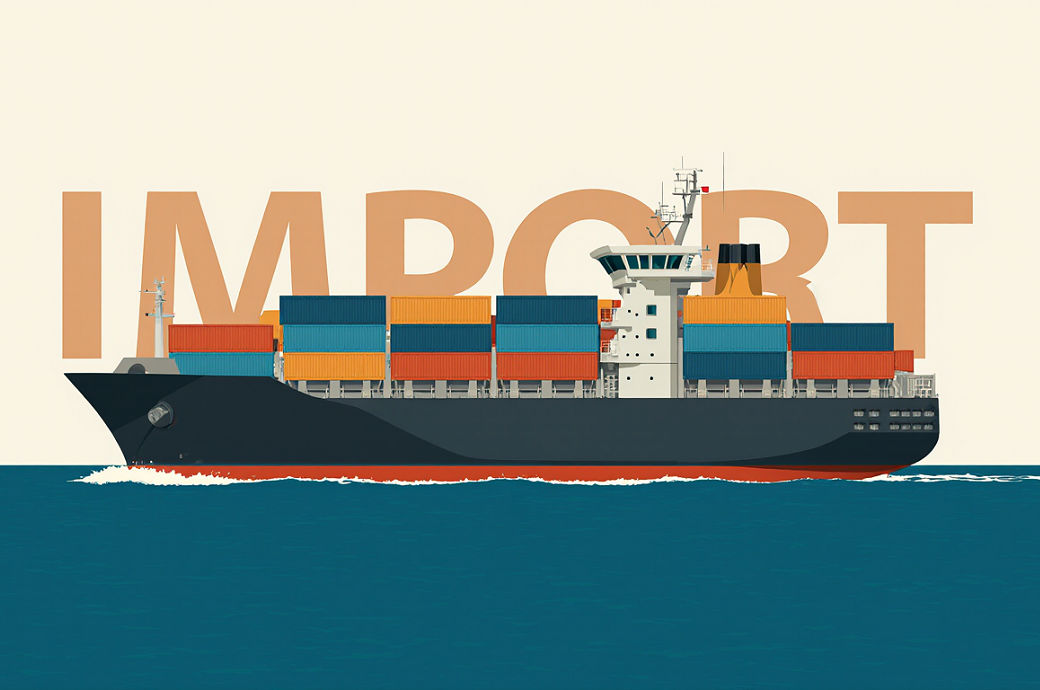
A circular by the central bank said the policy update follows the decision reached at the 186th meeting of the Scrutiny Committee on Foreign Loan/Supplier’s Credit of the Bangladesh Investment Development Authority (BIDA). The aim is to facilitate industrial growth.
Bangladesh Bank recently announced that authorised dealers may now allow their industrial importers to import capital goods on a usance term of up to three years under supplier’s or buyer’s credit.
The aim is to facilitate industrial growth.
However, usance period for import of spares will not be more than 360 days in all cases, a circular by the central bank said.
”The usance tenure shall also be applicable to such imports by industrial enterprises operating in export processing zones or private export processing zones/economic zones/hi-tech parks and other areas designated as specialised zones by the government. However, usance period for import of spares will not be more than 360 days in all cases,” the circular added.
Fibre2Fashion News Desk (DS)
-

 Politics6 days ago
Politics6 days agoThailand launches air strikes against Cambodian military: army
-

 Sports1 week ago
Sports1 week agoAustralia take control of second Ashes Test | The Express Tribune
-

 Fashion6 days ago
Fashion6 days agoGermany’s LuxExperience appoints Francis Belin as new CEO of Mytheresa
-

 Politics6 days ago
Politics6 days agoZelenskiy says Ukraine’s peace talks with US constructive but not easy
-

 Politics7 days ago
Politics7 days ago17 found dead in migrant vessel off Crete: coastguard
-

 Tech1 week ago
Tech1 week agoWIRED Roundup: DOGE Isn’t Dead, Facebook Dating Is Real, and Amazon’s AI Ambitions
-

 Business1 week ago
Business1 week agoNetflix to buy Warner Bros. film and streaming assets in $72 billion deal
-

 Tech1 week ago
Tech1 week agoMIT researchers “speak objects into existence” using AI and robotics




